The introduction is the first chapter of your thesis and thus is the starting point of your thesis. You describe the topic of your thesis. formulate the problem statement and write an overview of your thesis .
Purpose of the introduction:
- Introduce the topic. What is the purpose of the study and what is the topic?
- Gain the reader’s interest. Make sure that you get the reader’s attention by using clear examples from recent news items or everyday life.
- Demonstrate the relevance of the study. Convince the reader of the scientific and practical relevance.
Parts of the introduction
A clear introduction often consists of the following parts:
Motivation (Problem indication)
What is the motive for your research. This can be a recent news item or something that has always interested you. By choosing an interesting example, the reader is immediately encouraged to read the rest of your introduction.
Scope
Based on the motivation or problem indication, you describe the topic of your thesis. Make sure that you directly define the topic of your research. Don’t fall into the trap of wanting to research too much, but rather always look for a niche.
Theoretical and practical relevance of the research
Using arguments, state the scientific relevance of your research. You can do this by citing scientific articles and combining them. Also, highlight here the discussion chapters of studies that you are going to use for your own research.
Next, explain the practical use of your research. If you find this difficult to do, then try to pose the question of your research’s use to friends or acquaintances. They often have a completely different view of your topic.
When you are writing a thesis for a company, you will find that the scientific relevance is much more difficult to demonstrate.
On the other hand, it should be easier to show the practical benefit. Don’t think just of the company at which you are doing an internship, but think of, for example, practical applications for the entire industry.
Scientific situation related to the theme of your research
In this element of the introduction, you specify the most important scientific articles that relate to your topic and you briefly explain them. Thus, you show that many studies have been conducted around the topic, and that you won’t get stuck due to finding too little information on your topic.
Objective, problem statement and research questions
In this part, you describe the objective of your study and the problem statement that you have formulated. Pay attention: there is a difference between the objective and the problem statement. To answer the problem statement, you can use research questions. These are sometimes also called sub questions. If you use hypotheses instead of research questions, you can also note them here.
The basis of the hypotheses is the conceptual framework. However, sometimes you are not yet able to formulate hypotheses, because you are first going to conduct a literature review. In this case you develop the hypotheses and the conceptual framework later, after the literature review .
Brief description of the research design
Later in your research, you develop the research design in detail.

However, in the introduction you also provide a brief summary of your research design. How, where, when and with whom are you going to conduct your research?
Thesis outline
Here, you briefly describe how your thesis is constructed. Summarize each chapter briefly in one paragraph at the most, but preferably in one sentence. Make sure your thesis outline is not repetitively phrased because it does not vary its word choice.
Begin with your research proposal
Often, the research proposal or the action plan is a good start for writing your introduction. You will notice that you already have written many parts of the introduction in your research proposal.
Although the introduction is at the beginning of your thesis, this placement doesn’t mean that you must finish the introduction before you can start the rest of your research. The further you get in your research, the easier it will be to write a good introduction that is to the point. Thus, it’s no disaster if you can’t write a perfect introduction right away. Take up the introduction again at a later time and keep writing and editing until you arrive at a nice whole.
Verb tenses
To introduce your subject and indicate what you wish to discuss, you should use the simple present tense. Background information is written in the simple past tense or present perfect tense .
Length of the introduction
There are no specific requirements with regard to the length of your introduction. Thus, there’s no need to squeeze everything together on just one page, like with the abstract .
But you do need to write to the point. Don’t repeat yourself and only write down what’s actually important to introduce your topic and research.
Checklist for the introduction
The introduction of the research is written with a stimulating topic.
The introduction is the first chapter of your thesis and thus is the starting point of your thesis. You describe the topic of your thesis. formulate the problem statement and write an overview of your thesis .
Purpose of the introduction:
- Introduce the topic. What is the purpose of the study and what is the topic?
- Gain the reader’s interest. Make sure that you get the reader’s attention by using clear examples from recent news items or everyday life.
- Demonstrate the relevance of the study. Convince the reader of the scientific and practical relevance.
Parts of the introduction
A clear introduction often consists of the following parts:
Motivation (Problem indication)
What is the motive for your research. This can be a recent news item or something that has always interested you. By choosing an interesting example, the reader is immediately encouraged to read the rest of your introduction.
Scope
Based on the motivation or problem indication, you describe the topic of your thesis. Make sure that you directly define the topic of your research. Don’t fall into the trap of wanting to research too much, but rather always look for a niche.
Theoretical and practical relevance of the research
Using arguments, state the scientific relevance of your research. You can do this by citing scientific articles and combining them. Also, highlight here the discussion chapters of studies that you are going to use for your own research.
Next, explain the practical use of your research. If you find this difficult to do, then try to pose the question of your research’s use to friends or acquaintances. They often have a completely different view of your topic.
When you are writing a thesis for a company, you will find that the scientific relevance is much more difficult to demonstrate. On the other hand, it should be easier to show the practical benefit. Don’t think just of the company at which you are doing an internship, but think of, for example, practical applications for the entire industry.
Scientific situation related to the theme of your research
In this element of the introduction, you specify the most important scientific articles that relate to your topic and you briefly explain them. Thus, you show that many studies have been conducted around the topic, and that you won’t get stuck due to finding too little information on your topic.
Objective, problem statement and research questions
In this part, you describe the objective of your study and the problem statement that you have formulated. Pay attention: there is a difference between the objective and the problem statement. To answer the problem statement, you can use research questions. These are sometimes also called sub questions. If you use hypotheses instead of research questions, you can also note them here.
The basis of the hypotheses is the conceptual framework. However, sometimes you are not yet able to formulate hypotheses, because you are first going to conduct a literature review. In this case you develop the hypotheses and the conceptual framework later, after the literature review .
Brief description of the research design
Later in your research, you develop the research design in detail. However, in the introduction you also provide a brief summary of your research design. How, where, when and with whom are you going to conduct your research?
Thesis outline
Here, you briefly describe how your thesis is constructed. Summarize each chapter briefly in one paragraph at the most, but preferably in one sentence. Make sure your thesis outline is not repetitively phrased because it does not vary its word choice.
Begin with your research proposal
Often, the research proposal or the action plan is a good start for writing your introduction. You will notice that you already have written many parts of the introduction in your research proposal.
Although the introduction is at the beginning of your thesis, this placement doesn’t mean that you must finish the introduction before you can start the rest of your research. The further you get in your research, the easier it will be to write a good introduction that is to the point. Thus, it’s no disaster if you can’t write a perfect introduction right away. Take up the introduction again at a later time and keep writing and editing until you arrive at a nice whole.
Verb tenses
To introduce your subject and indicate what you wish to discuss, you should use the simple present tense. Background information is written in the simple past tense or present perfect tense .
Length of the introduction
There are no specific requirements with regard to the length of your introduction. Thus, there’s no need to squeeze everything together on just one page, like with the abstract .
But you do need to write to the point. Don’t repeat yourself and only write down what’s actually important to introduce your topic and research.
Checklist for the introduction
The introduction of the research is written with a stimulating topic.


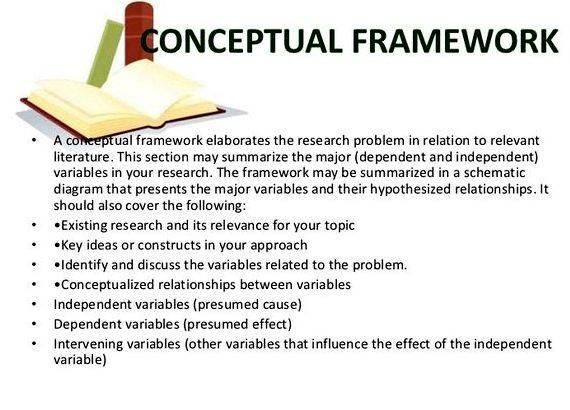


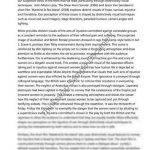 Distinctively visual shoe horn sonata thesis writing
Distinctively visual shoe horn sonata thesis writing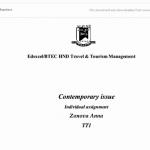 Intel germany master thesis proposal
Intel germany master thesis proposal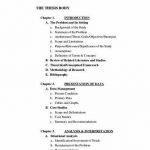 Social architecture thesis proposal titles
Social architecture thesis proposal titles Writing your thesis sage publications jobs
Writing your thesis sage publications jobs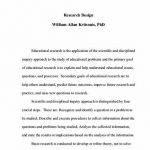 Research design and methodology in thesis writing
Research design and methodology in thesis writing






